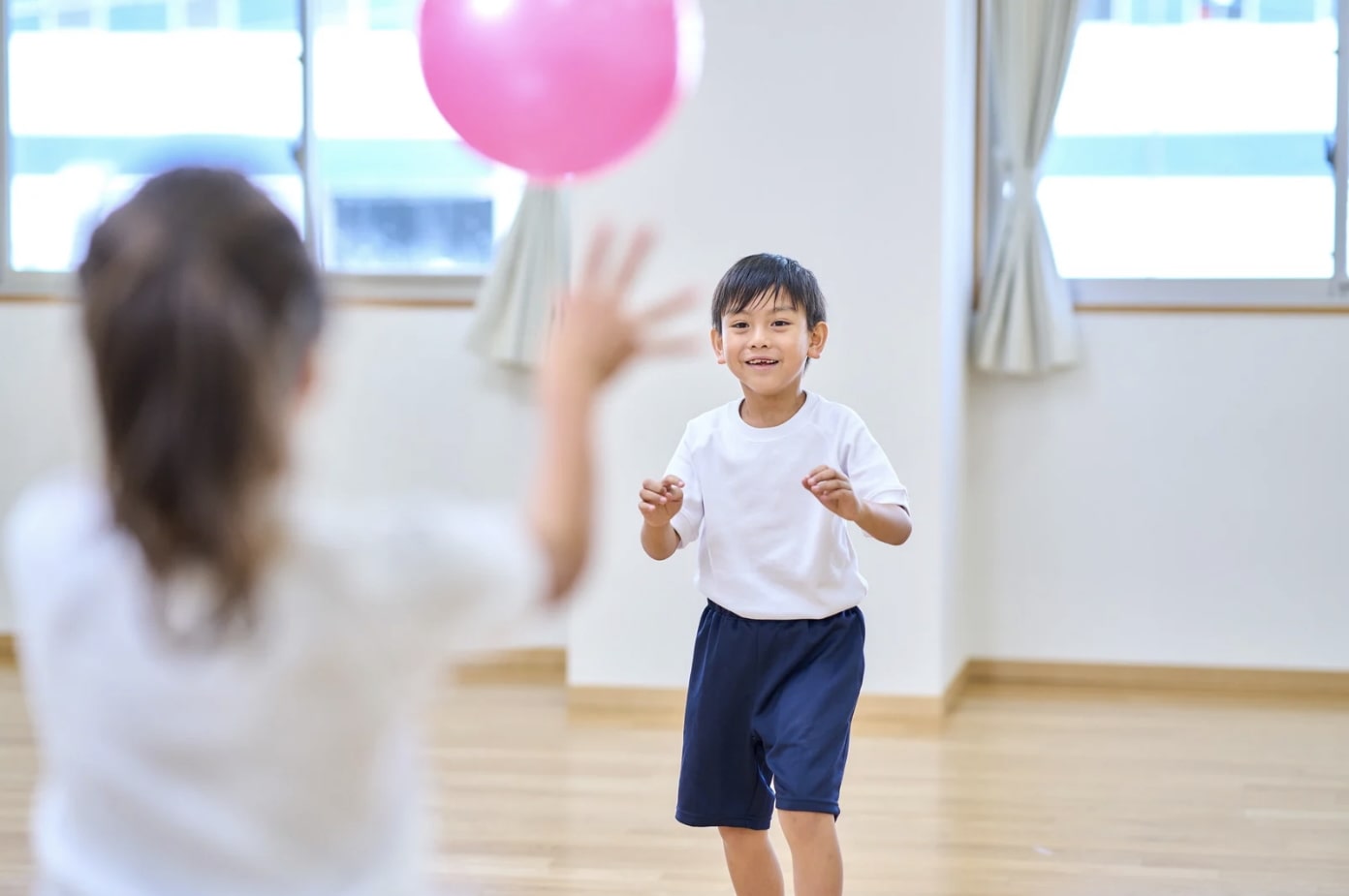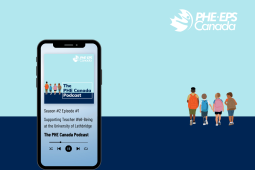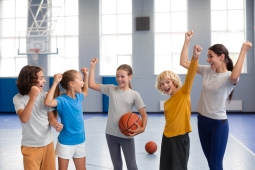Balloons: Adding Accomplishment, Joy, and Challenge for Physical Education Students

Balloons are an often-overlooked gem in the world of Physical Education (PE). Not only are they inexpensive, but they stay afloat for much longer than most balls, giving students ample time to strike, catch, and improve their coordination. Balloons are also versatile and offer a fun way to develop physical literacy while playing games that are engaging for students of all ages. Plus, they’re a great way to slow down the pace of the game, making activities more inclusive. If you’re planning to incorporate balloons into your PE program, here are some exciting ways to get students moving, balancing, and working together!
Individual Balloon Challenges
Balloons are perfect for solo activities that challenge a student's balance, coordination, and focus.
- Stork Stand: In this challenge, students stand on one foot and try to keep a balloon afloat without moving their foot or losing their balance. It’s a fun and simple way to work on core strength and stability.
- Double Run: For this activity, students are given two balloons. They start on one side of a basketball key or volleyball attack line, hit one balloon into the air, and run to the other side to hit the second balloon. The challenge is to keep running back and forth to keep both balloons afloat as long as possible!
Partner Challenges
Working with a partner adds an extra level of fun and complexity to balloon activities.
- Wobbly Balloon: Fill a small balloon with dried peas and place it inside a larger balloon. The result is a wobbly, unpredictable balloon that’s challenging to catch! Partners toss the balloon back and forth, working on their hand-eye coordination.
- Over-Under Bridge: One partner stands while the other lies on the ground. The standing player hits the balloon over their partner, then jumps over them. The process repeats, with the roles switching. It’s a great way to combine balance, agility, and teamwork. Be sure to have jumping player focus on jumping over their partner, not on top of their partner.
- Over and Under (Volleyball Dive): In this activity, one partner hits the balloon over the other partner, who is in a bridge position. The standing partner then dives under the bridge, keeping the balloon in the air. Before beginning this activity, ensure both participants are comfortable being both the bridge and the diver. This drill is excellent for introducing basic volleyball diving techniques!
Speed and Dribbling Challenges
If you want to increase or decrease the speed of play or focus on dribbling skills, balloons can help make it a fun challenge.
- Speed Run: Players race across the playing area while trying to keep a balloon afloat. The goal is to move as quickly as possible without letting the balloon touch the ground.
- Balloon Dribble with Feet: In this challenge, players use their feet to dribble a balloon while running or walking through a designated area. It’s a fun twist on traditional ball-handling drills that improves footwork and control. Another way to challenge players’ dribbling skills is to have them dribble a basketball or kick a soccer ball while moving down a court or field while also keeping a balloon afloat.
- Three Up: Players are tasked with keeping a balloon afloat while moving through a five-to-six pace square of cups or Toppletubes. The players must move through the cups, flipping them right-side-up or upside-down, all while keeping the balloon in the air.
Group Balloon Challenges
Balloons are also a fantastic way to promote teamwork and cooperation in group activities.
- 3, 2, 1 Players: In this challenge, three players each start with one balloon. They hit the balloon to each other, gradually increasing the number of balloons in play. The goal is to keep all balloons afloat for as long as possible, promoting teamwork and communication.
- Balloon Afloat: In this activity, each player keeps their own balloon in the air while moving around the playing area. The challenge can be made more difficult by adding additional balloons per player, requiring players to navigate around obstacles, or have players knock other’s balloons away.
- Group Keep-Up: In this team activity, a group of three-to-five players hold hands and take turns having each player keep the balloon afloat. Once all players have contacted the balloon, players can touch the balloon a second time. To make this more challenging, have the groups move from one end of the playing area to the other while keeping the balloon afloat.
- Balloon Train: A group of four to six players work together to keep a balloon between them, moving quickly through a playing area. The challenge is to maintain the balloon's position without dropping it, encouraging teamwork and coordination.
Balloon Activities for Net Games
Introducing students to basic net games, like volleyball, is a breeze when you use balloons.
- Partner Balloon Pass: Players hold hands and alternate hitting the balloon over or under their held hands.
- Volleyball with Pool Noodles: For a fun twist on volleyball, have players use pool noodles to hit multiple balloons back and forth. The oversized balloons make the game slower and more forgiving, perfect for beginners.
The Benefits of Using Balloons in PE
Balloons remind me of the fun I had at childhood parties. They’re also a fantastic tool for building physical literacy in the classroom. Here's why:
- Developing Coordination and Balance: Many balloon activities require players to work on their fine motor skills, balance, and agility.
- Inclusive and Fun: Balloons are ideal for students of all ages and abilities, providing an opportunity for everyone to participate in fun, low-pressure activities.
- Enhancing Teamwork: Many of the challenges involve working together, helping students build communication and cooperation skills while having a blast.
What’s even better is that balloons are inexpensive, easy to find (you can grab them at dollar stores or from Gopher), and can be adapted for different skill levels. If you’re concerned about allergies, latex-free balloons are widely available, making them a safe choice for everyone.









